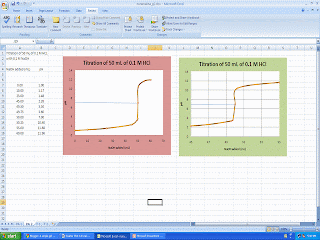A simple girl
Monday, January 24, 2011
Monday, January 10, 2011
Sunday, January 2, 2011
pRoTeIN DaTA BanK
PubMed Abstract:
Rv3671c, a putative serine protease, is crucial for persistence of Mycobacterium tuberculosis in the hostile environment of the phagosome. We show that Rv3671c is required for M. tuberculosis resistance to oxidative stress in addition to its role in protection from acidification. Structural and biochemical analyses demonstrate that the periplasmic domain of Rv3671c is a functional serine protease of the chymotrypsin family and, remarkably, that its activity increases on oxidation. High-resolution crystal structures of this protease in an active strained state and in an inactive relaxed state reveal that a solvent-exposed disulfide bond controls the protease activity by constraining two distant regions of Rv3671c and stabilizing it in the catalytically active conformation. In vitro biochemical studies confirm that activation of the protease in an oxidative environment is dependent on this reversible disulfide bond. These results suggest that the disulfide bond modulates activity of Rv3671c depending on the oxidative environment in vivo.
PubMed Abstract:
Lon ATP-dependent proteases are key components of the protein quality control systems of bacterial cells and eukaryotic organelles. Eubacterial Lon proteases contain an N-terminal domain, an ATPase domain, and a protease domain, all in one polypeptide chain. The N-terminal domain is thought to be involved in substrate recognition, the ATPase domain in substrate unfolding and translocation into the protease chamber, and the protease domain in the hydrolysis of polypeptides into small peptide fragments. Like other AAA+ ATPases and self-compartmentalising proteases, Lon functions as an oligomeric complex, although the subunit stoichiometry is currently unclear. Here, we present crystal structures of truncated versions of Lon protease from Bacillus subtilis (BsLon), which reveal previously unknown architectural features of Lon complexes. Our analytical ultracentrifugation and electron microscopy show different oligomerisation of Lon proteases from two different bacterial species, Aquifex aeolicus and B. subtilis. The structure of BsLon-AP shows a hexameric complex consisting of a small part of the N-terminal domain, the ATPase, and protease domains. The structure shows the approximate arrangement of the three functional domains of Lon. It also reveals a resemblance between the architecture of Lon proteases and the bacterial proteasome-like protease HslUV. Our second structure, BsLon-N, represents the first 209 amino acids of the N-terminal domain of BsLon and consists of a globular domain, similar in structure to the E. coli Lon N-terminal domain, and an additional four-helix bundle, which is part of a predicted coiled-coil region. An unexpected dimeric interaction between BsLon-N monomers reveals the possibility that Lon complexes may be stabilised by coiled-coil interactions between neighbouring N-terminal domains. Together, BsLon-N and BsLon-AP are 36 amino acids short of offering a complete picture of a full-length Lon protease.
PubMed Abstract:
The highly conserved ClpP protease consists of two heptameric rings that interact by the interdigitation of an alpha-helix beta strand handle domain motif to form a tetradecameric cylinder. We previously proposed that protease dynamics results in the temporary unstructuring of interacting pairs of handle domains, opening transient equatorial side pores that allow for peptide egress. Here, we report the structure of an Escherichia coli ClpP mutant in which each opposing pair of protomers is linked by a disulfide bond. This structure resembles the compact structures of Streptococcus pneumoniae, Mycobacterium tuberculosis, and Plasmodium falciparum ClpPs, rather than the active, extended structures that have previously been determined for E. coli ClpPs. The structural data, along with normal mode analysis, support a model whereby the ClpP cylinder switches dynamically between an active extended state required for substrate degradation and an inactive compact state allowing peptide product release.
Sunday, December 19, 2010
HTML
HyperText Markup Language, is the predominant markup language for web pages. A markup language is a set of markup tags, and HTML uses markup tags to describe web pages.
HTML is written in the form of HTML elements consisting of "tags" surrounded by angle brackets (like <html>) within the web page content. HTML tags normally come in pairs like <b> and </b>. The first tag in a pair is the start tag, the second tag is the end tag (they are also called opening tags and closing tags).
The purpose of a web browser is to read HTML documents and display them as web pages. The browser does not display the HTML tags, but uses the tags to interpret the content of the page.
HTML elements form the building blocks of all websites. HTML allows images and objects to be embedded and can be used to create interactive forms. It provides a means to create structured documents by denoting structural semantics for text such as headings, paragraphs, lists, links, quotes and other items. It can embed scripts in languages such as JavaScript which affect the behavior of HTML webpages.
HTML can also be used to include Cascading Style Sheets (CSS) to define the appearance and layout of text and other material. The W3C, maintainer of both HTML and CSS standards, encourages the use of CSS over explicit presentational markup.[1]
Origins
In 1980, physicist Tim Berners-Lee, who was a contractor at CERN, proposed and prototyped ENQUIRE, a system for CERN researchers to use and share documents. In 1989, Berners-Lee wrote a memo proposing an Internet-based hypertext system.[2] Berners-Lee specified HTML and wrote the browser and server software in the last part of 1990. In that year, Berners-Lee and CERN data systems engineer Robert Cailliau collaborated on a joint request for funding, but the project was not formally adopted by CERN. In his personal notes[3] from 1990 he lists[4] "some of the many areas in which hypertext is used" and puts an encyclopedia first.
(For further information about HTML,you can refer to the link below here)
| history, markup | semantic html |
| current variations, features | references, links |
Subscribe to:
Posts (Atom)


















